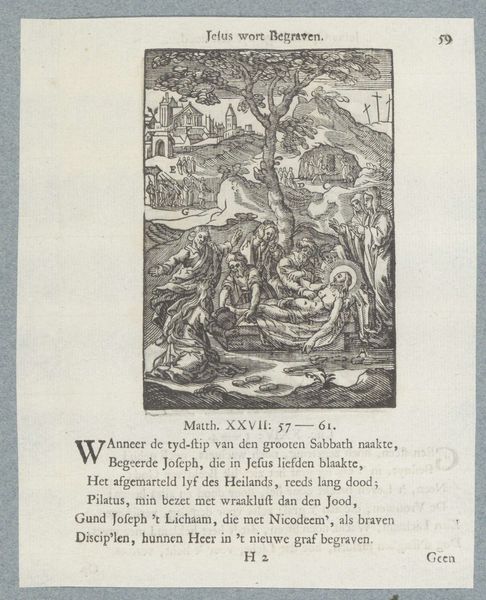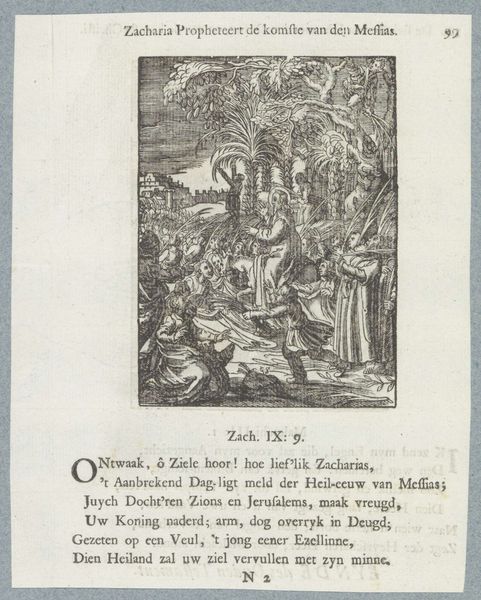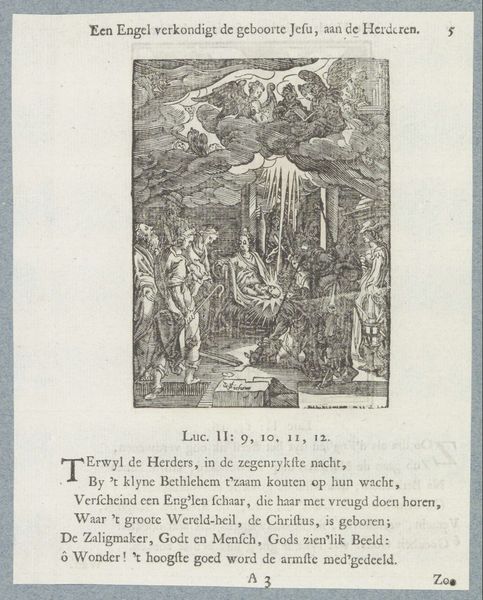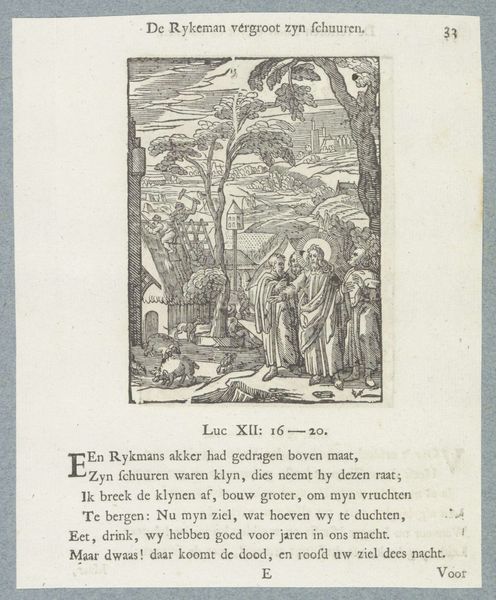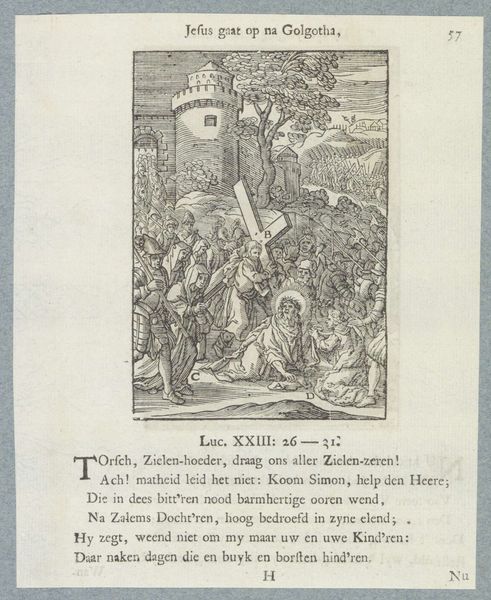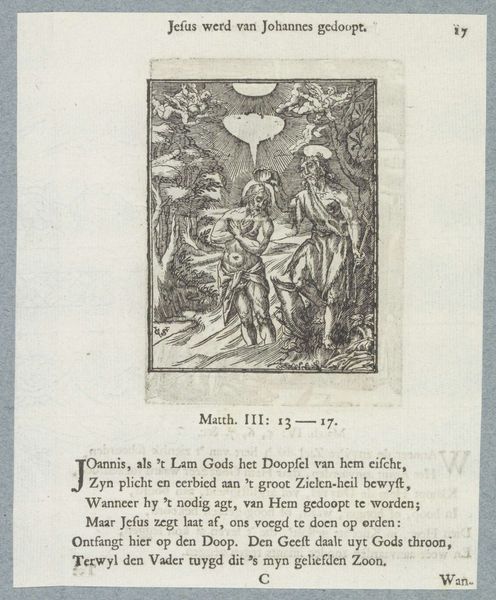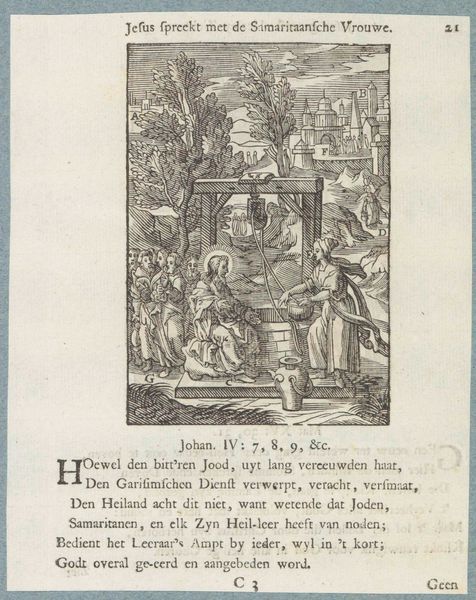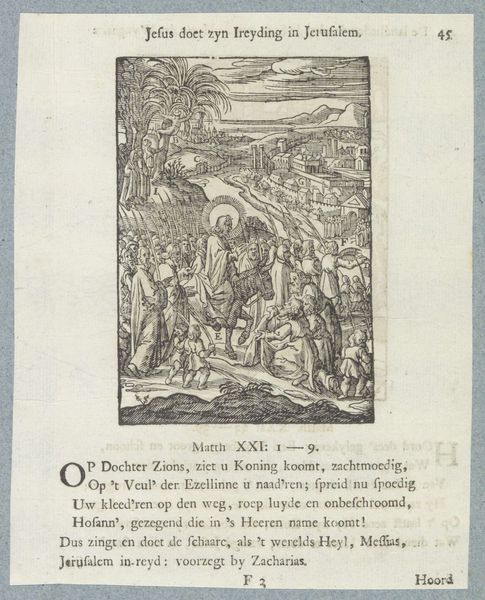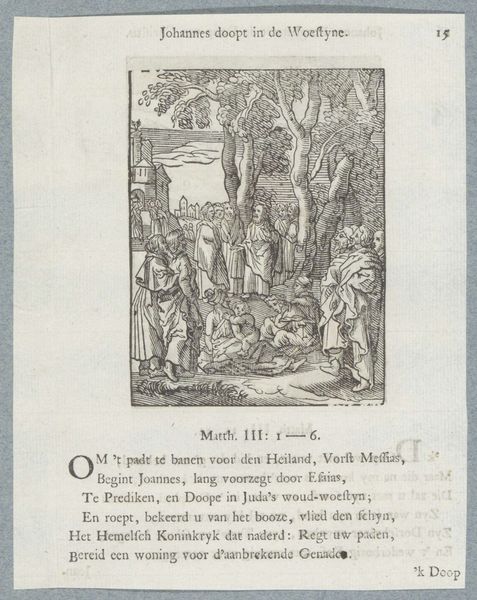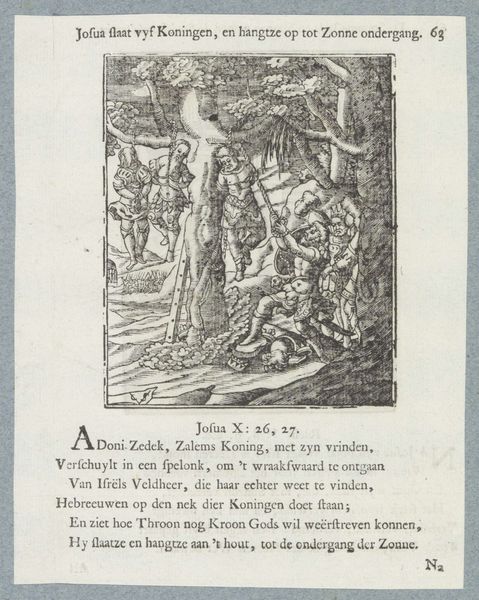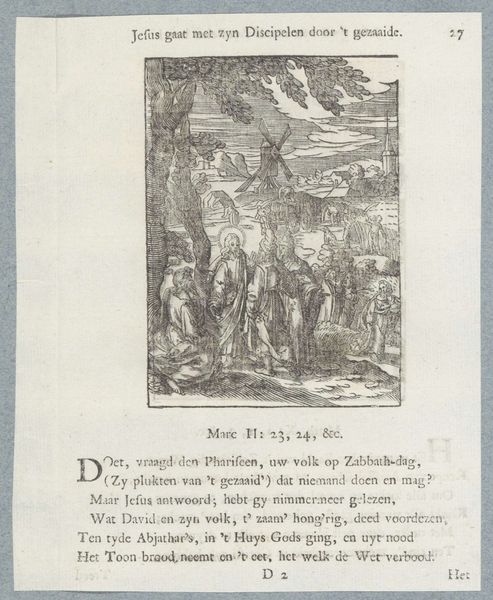
print, engraving
#
narrative-art
# print
#
landscape
#
northern-renaissance
#
engraving
Dimensions: height 109 mm, width 74 mm, height 168 mm, width 132 mm
Copyright: Rijks Museum: Open Domain
Curator: This engraving, “Christus verschijnt aan Maria Magdalena,” attributed to Christoffel van Sichem II, likely created between 1629 and 1740, presents an intriguing interplay of line and form. Editor: It's currently held at the Rijksmuseum. I am struck by the stark contrast between light and shadow, and how the landscape, though detailed, seems almost secondary to the figures. What are your initial observations of the composition? Curator: Indeed. Note the composition. The organization presents a clear hierarchy. Observe how the lines direct the viewer’s eye towards the resurrected Christ. Semiotically, light functions as a signifier of divinity, doesn't it? Editor: I see what you mean. The use of light around Christ draws attention but almost flattens the surrounding figures. But how can you discern the artist's intentions based solely on formal elements? Isn’t it too limiting to exclude other contexts? Curator: By focusing on the visual language. This self-contained system operates independently. Notice the deliberate positioning of the figures, the textures achieved through line variation – these compositional choices create the work's meaning. For example, what feeling arises from how van Sichem II presents linear strokes around the figure? Editor: Hmm. Perhaps van Sichem aimed for clarity and focus through a carefully constructed scene devoid of superfluous distractions, thus concentrating solely on its formal relationships? Curator: Precisely. These elements constitute its very essence and give form to it. Editor: So, it seems appreciating art from a Formalist perspective can reveal profound relationships of balance, space, and symbolism contained in artworks such as this, a reminder to slow down and study a piece.
Comments
No comments
Be the first to comment and join the conversation on the ultimate creative platform.
